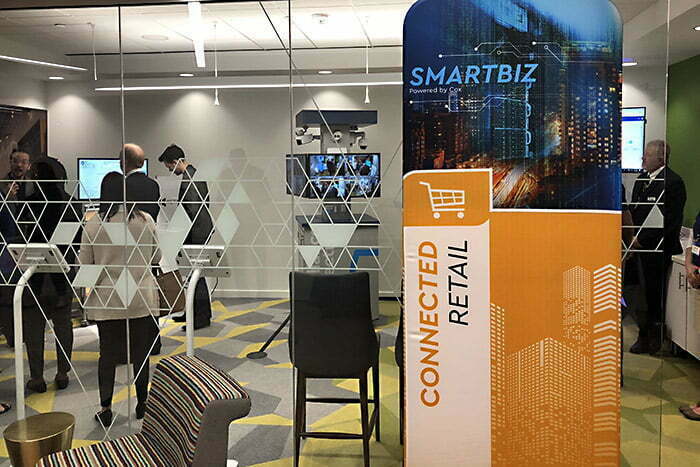
When the eyes of a slack-mouthed robot boy dart toward you and a prerecorded voice whines from its rubbery frame—“I want to go home”—you can thank the latest smart technology for any heebie jeebies you feel.
HAL is a simulated patient developed through the UNMC iEXCEL program, which employs simulation and visualization technology in healthcare education. The bot has a programmable heartbeat, makes digestion sounds, and even cries real tears.
“We have a whole family of them, from preemies to adults,” said Samantha Rogers, advanced simulation specialist for iEXCEL. iEXCEL’s goal is to improve human performance and outcomes in medical scenarios.
The HAL bot was one of the smart community technologies on display Wednesday at SmartBiz Omaha, an event coordinated between the Greater Omaha Chamber of Commerce, the Startup Collaborative, and Cox Business to showcase cutting-edge advances in business, healthcare, education, workplace, and city infrastructure technology.
Multiple demonstration stations were set up around the Greater Omaha Chamber office to allow attendees to experience the developments firsthand. For instance, Retail Aware is a smart retail app that uses sensors to monitor how customers interact with products displayed in-store, and then provides real-time data to help businesses track product engagement. Trapollo allows doctors to remotely monitor the health of patients and make virtual housecalls.
The centerpiece of the event was a smart city augmented reality experience that lets municipalities continually monitor water infrastructure. Such an app could save a considerable amount of money for local governments, said Derrick Calderon, director of Cox Smart Communities.
“It’ll take a lot of partnership with the City, but I see that Omaha can definitely be a benefactor of smart technology. It’s a great environment, a good-sized city to be able to do this in,” Calderon said.
Not Your Mom’s Cable Company Anymore
“For Cox Business, it’s more about making sure people understand it’s not your mom’s cable company anymore,” said Ashley Perkins, vice president of Cox Business. She referenced several mergers and acquisitions that Cox has made to move further into technology infrastructure, such as Rapidscale, a cloud computing company.
Governor Pete Ricketts opened the SmartBiz Omaha event with remarks about the need to strengthen Nebraska’s tech workforce to meet current and future business demands.
Following the governor’s remarks, Ken Kraft, senior vice president of marketing for the Greater Omaha Chamber, moderated a panel of area tech stakeholders consisting of Dee Baird, senior vice president of economic development for the Greater Omaha Chamber; Marcus Graham, director of creative development for the livestreaming service Twitch; Cathy Lang, state director of the Nebraska Business Development Center; and Victoria Novak, director of workforce & IT innovation at Metropolitan Community College.
The panel commended the region for its powerful telecommunications infrastructure while reiterating the need to ramp up local tech workforce development.
“We have to punch way above our weight,” Baird said, in comparison to cities with tech-heavy workforces that are competing with Omaha for business investment.
Recognizing this, the Chamber has a goal adding 10,000 tech workers to the Omaha area, with a median salary of $50,000, over the next five years.
“These are not small numbers,” Baird said. “This is what keeps me up at night.”
Code schools like the Interface Web School are already training skilled tech workers to meet that demand. But to keep tech talent here, and to attract more talent and business investment, the region also needs a transportation strategy that includes a more robust public transit system.
“We have to think about how we’re going to move our labor around,” Baird said.
